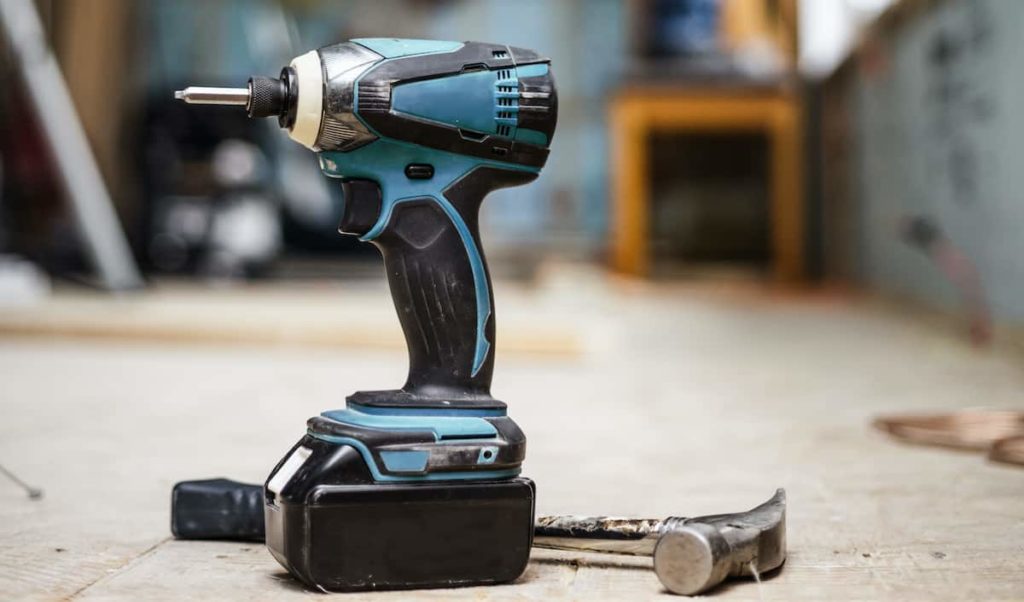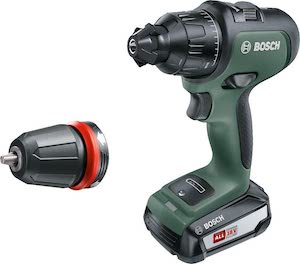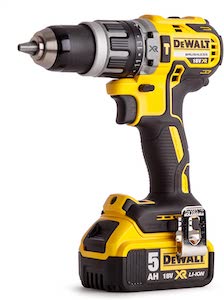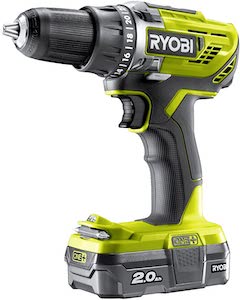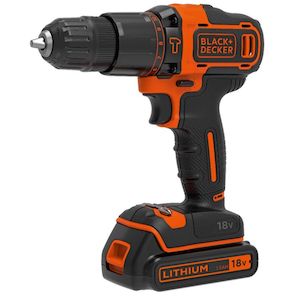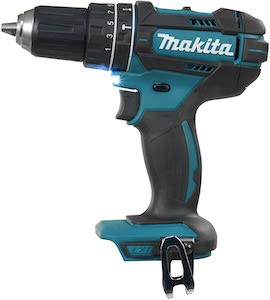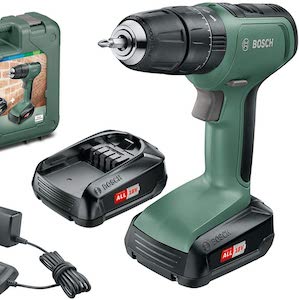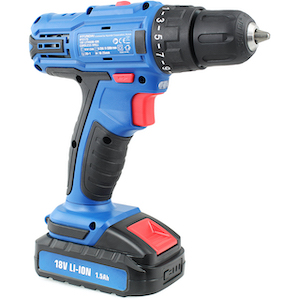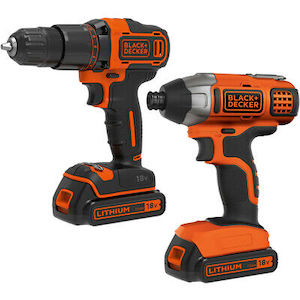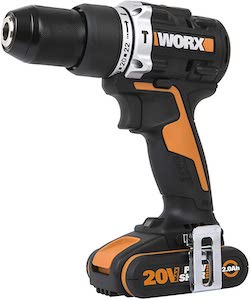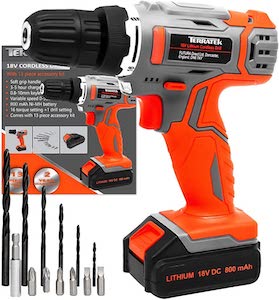Types Of Drill
Within cordless drills, there are various sub-sections.
Loosening and tightening screws (like a screwdriver), and drilling holes. Best for everyday uses, such as putting up shelving and building furniture.
Most cordless drill drivers will accept various types of bit, for use on wood, masonry and metal. Can struggle on the toughest of materials, like concrete
A more powerful pick, as you can also drill through brickwork for putting up hanging basket brackets, or other fasteners.
They use a ‘hammering’ action as opposed to circular drilling and are also available in corded varieties for the most powerful options, although cordless hammer drills are fine for most household applications
These are the most versatile cordless drills, as they can function as both drill drivers and hammer drills. They’re usually a bit more powerful than single-function models.
You can add a range of bits to the cordless drill units, making them suitable for different functions. The downside is that they’re often heavier and bulkier than other cordless drill varieties
Drills use small metal brushes to get the shaft spinning, but brushless drills use an electronic circuit board and a sensor instead.
The result is more responsive, energy-efficient, lighter and a longer-lasting unit – even if it is a cordless drill model
Battery Power
A cordless drill can either come with a battery or without.
The idea of a cordless drill model is that it is a bit more flexible in terms of where you can take it. With no cords to worry about, you don’t have to think about finding the nearest plug – particularly handy if your house is short on them, or you will be outside.
Cordless drills with batteries are a complete starter kit. Those without can often use batteries in the same range. For instance, some brands allow you to use the same battery in their drills as in their hedge trimmers, grass strimmers or lawnmowers (look at the likes of GTech and Worx).
You may wish to buy a few batteries, so when one runs out, you don’t have to wait for it to charge and can swap it out right away. They can be taken out and charged on their own, as opposed to charging the entire drill.
Look for a cordless battery which can hold a charge for long enough for tasks, and is quick to charge. Batteries are measured in Ah (Amp Hours) – 1.5Ah to 4.0Ah is the general measure, and the higher the amp, the longer the charge will last.
Power
The power of a cordless drill is measured in volts, unlike a corded which is watts. The higher the voltage, the more likely it is to be strong enough for tougher materials.
You may also want to look at the speed, in RPM. Again, a higher speed means more power.
Torque
Torque is the force a drill provides to turn an object. The key to cordless drill performance is being able to deliver torque at the highest speed.
Torque has been increasing over the years, especially with cordless drills which used to be pretty mediocre but are now more powerful than ever. If you combine speed and torque, a measurement called Power is given.
- Speed is how fast it turns (revolutions/minute)
- Torque is the force produced to turn an object
- Power is the amount of work completed within a time frame
Extras
You may want to look for a reverse function. This can change the direction of screws and bits, for loosening them. Perfect if you will be using your cordless drill as a screwdriver.
The chuck size or drilling capacity will tell you the maximum diameter of bit that can be used. It is usually from 10mm (3/8 inch) to 13mm (1/2 inch). Pay attention if you already have some bits.
Some cordless drills may only accept bits which are from certain brands.
Also, pay attention to gears. This is how much speed the cordless drill ranges. Those with more than one gear will give you different speed ranges, but those with single gears can sometimes still be adjusted to go faster or slower.
Extras such as LED lighting can also help.


